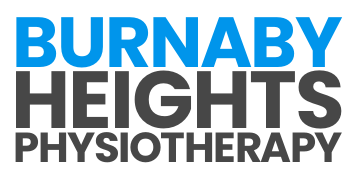Overcome Pain: Your Guide to Pelvic Floor Physiotherapy
October 27, 2025Pelvic Floor Physiotherapy for Pregnancy: A Game Changer
October 27, 2025Pelvic floor physiotherapy for constipation can be a powerful way to reclaim comfort and confidence in your daily routine. By focusing on the group of muscles that support your digestive system, you can develop better control over bowel movements. Below, you’ll learn how pelvic floor physiotherapy works, why it matters for constipation, and what steps you can take to get started on a path to lasting relief.
Understand The Pelvic Floor
Your pelvic floor sits at the base of your torso, acting like a supportive hammock for your bladder, bowel, and reproductive organs. If these muscles weaken or become tense, you may notice constipation or difficulty with regular bowel function. Strengthening and relaxing these crucial muscles helps you manage how you pass stool, reducing straining or discomfort.
Connect Pelvic Floor And Constipation
Constipation happens when stool moves too slowly through your digestive tract. While diet and hydration play big roles, your pelvic floor muscles also affect how quickly and smoothly you can empty your bowels. A tense or poorly coordinated pelvic floor may not relax enough for a comfortable bowel movement. Pelvic floor physiotherapy targets these imbalances so your muscles work in rhythm with your digestive system.
Apply Physiotherapy Techniques
A pelvic floor physiotherapist will typically guide you through a few key strategies to address constipation:
- Biofeedback: You learn how to sense and gradually control pelvic floor muscles, focusing on relaxing them during bowel movements.
- Manual Therapy: Hands-on techniques may help release tension and improve muscle coordination.
- Exercise Programs: You might practice targeted stretches, strength exercises, and breathing drills that boost pelvic floor function.
If you’re also experiencing pelvic pain, you can explore pelvic floor physiotherapy for pelvic pain to learn more about additional treatment options.
Try Simple At-Home Strategies
Beyond sessions with a professional, certain daily habits and routines can ease constipation:
- Practice Diaphragmatic Breathing
- Let your stomach rise and fall as you breathe, rather than tensing your belly. This helps reduce strain and encourages muscle relaxation.
- Focus On Proper Toilet Posture
- Use a small footstool or elevate your feet to release tension in your pelvic region. Aim to keep your knees slightly above hip level as you sit.
- Keep Hydrated
- Drinking enough water keeps your stool soft and easier to pass, reducing the need for straining.
- Warm Up Your Muscles
- Gentle stretching or light exercise such as a short walk can get blood flowing to your pelvic area, making bowel movements smoother.
Know When To Consult A Pro
If simple tweaks don’t resolve your constipation or you notice related symptoms like pain or incontinence, consider a formal evaluation from a pelvic floor physiotherapist. They will assess alignment, muscle strength, and coordination to tailor a plan for your specific needs. If you have recently given birth and are experiencing similar symptoms, you might also benefit from pelvic floor physiotherapy postpartum to address any lingering discomfort.
Key Takeaways
Pelvic floor physiotherapy for constipation can transform how you regulate bowel movements and ease abdominal pressure. By improving muscle coordination, posture, and relaxation techniques, you give your body a better chance of staying regular without constant straining. If at-home interventions don’t bring relief, a specialist can design a targeted program to help muscles function optimally. With the right balance of education, exercises, and professional support, you’ll feel more confident and in control of your digestive health.


